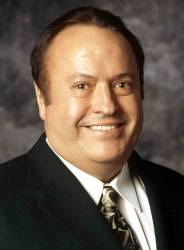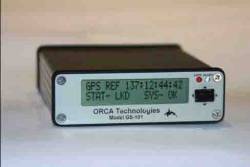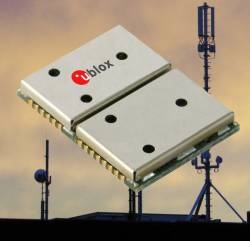Timing on the Fly
Sensor fusion is a predominant feature of modern navigation systems. To integrate navigation systems with other sensors, the spatial and temporal relationship of the sensor systems must be defined and calibrated.
BySensor fusion is a predominant feature of modern navigation systems. To integrate navigation systems with other sensors, the spatial and temporal relationship of the sensor systems must be defined and calibrated.
By Brad Anderson
Brad AndersonRosum Corporation, the Mountain View, California–based supplier of timing and positioning technology that combines GPS and broadcast television signals, has named Brad Anderson as the company’s new chief executive officer.
By Inside GNSSTrimble has introduced the postage stamp–sized Resolution SMT, a 12-channel parallel tracking, embeddable GPS receiver in a surface mount packaged designed to provide precise GPS or UTC time and synchronization for many static timing applications.
By Inside GNSSPCTEL offers the GPSL1GL-TMG-40N timing reference antenna specifically designed for deployments in congested cell-site applications and able to receive signals from GPS, Galileo, and GLONASS satellites in the 1575.42 ± 10 MHz and 1602-1615 MHz frequency bands. The low-noise, high-gain amplifier is well suited to address attenuation issues associated with applications requiring longer cable runs. The proprietary quadrifiliar helix design, coupled with multistage filtering improves out-of-band rejection and lower elevation pattern performance.
By Glen GibbonsA recently announced partnership between GNSS technology innovator NovAtel, Inc., and Brilliant Telecommunications underscores the profound changes taking place in the precise timing markets.
By Glen Gibbons ORCA Technologies’ GS-101
ORCA Technologies’ GS-101ORCA Technologies LLC, a recent start-up company — but one whose principals come with a long background in GPS timing instrumentation — has introduced the Model GS-101 GPS/IRIG-B Synchronized Time Code Generator (STCG).
By Glen Gibbons u-blox LEA-5T
u-blox LEA-5TSwiss GNSS chip manufacturer u-blox has introduced a new precise timing GPS module, the LEA-5T, precise timing at the CTIA Wireless 2008 conference taking place this week in Las Vegas.
Based on the company’s 50-channel, fifth-generation chipset technology, the LEA-5T is intended for such applications as telecom network synchronization, use in WiMAX base stations for home-based broadband networks, and data communication among geographically dispersed systems and devices such as NTP servers.
By Glen GibbonsSan Jose, California–based Symmetricom, Inc., has launched the SyncServer S300/S350, the latest in its line of network time servers using the latest Network Time Protocol (NTP) to synchronize time on servers, workstations, and a variety of network elements for expanding IT enterprises.
The company also announced that its XLi SAASM Time and Frequency Receiver with a new Ground-Based GPS Receiver Application Module (GB-GRAM) SAASM receiver has been granted security approval by the Global Positioning Systems Wing (GPSW). The GB-GRAM GPS Receiver is integrated into Symmetricom’s XLi SAASM (Selective Availability Anti-Spoofing Module).
By Inside GNSS